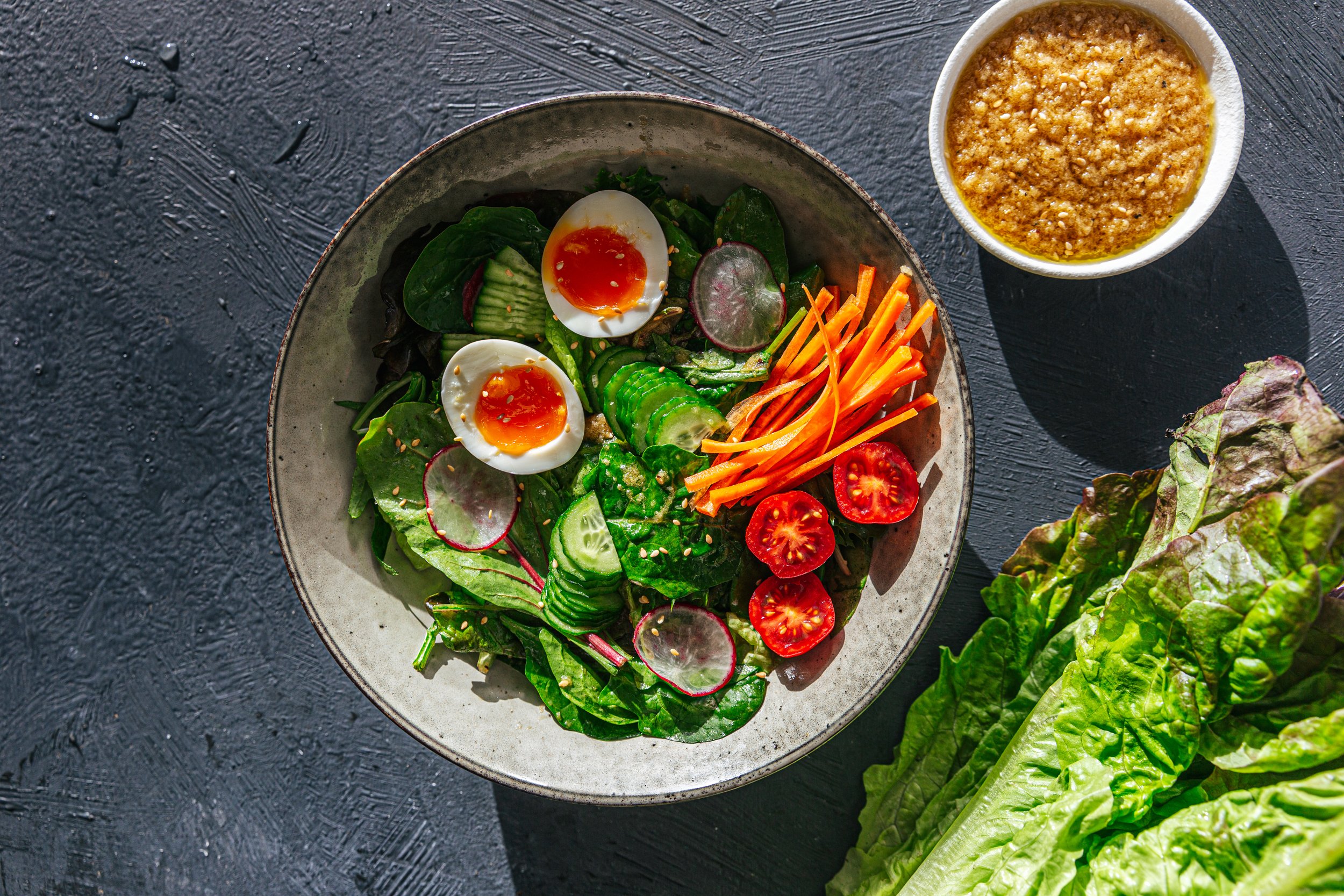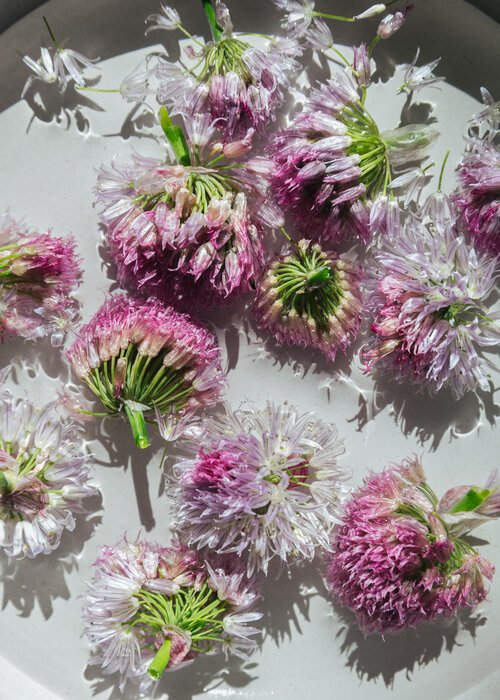I have an appetite for chives. Chives in boiled dumplings, chives in potstickers; chives chopped, stir-fried and hidden into chive pockets; chives wrapped into steamed buns and strung onto sticks with enoki or chicken skewers from vendors on the streets in Asia; chives fried with egg, dried shrimp, thin slivers of pork and rice noodles grandma would make by the mountain-full. I eat chives for the taste just as much as the love of the memories I have of eating them.
There is something incredibly beautiful about chives blossoms, the tiny bursts of purple on long green stems, the pungent smell and tiny seeds that fall from their pods. I also cherish the fact that I get to harvest a handful of these beauties every year from my dad’s yard — so pretty that I put them in vases for a few days before making a recipe out of them.
I chuckle to think of the traits I bring from Asian culture into photography —choosing to photograph subjects that are at once tasty, photogenic, accessible and meaningful. It’s almost like someone said, “I created these chive blossoms, make good use of them!” An opportunity one must not pass.
So here is a recipe for chive blossom vinegar. A vinegar that will taste slightly like chives and turn the liquid into a deceivingly shade of rosé. Great for pickling daikon or adding flavour to a salad.











